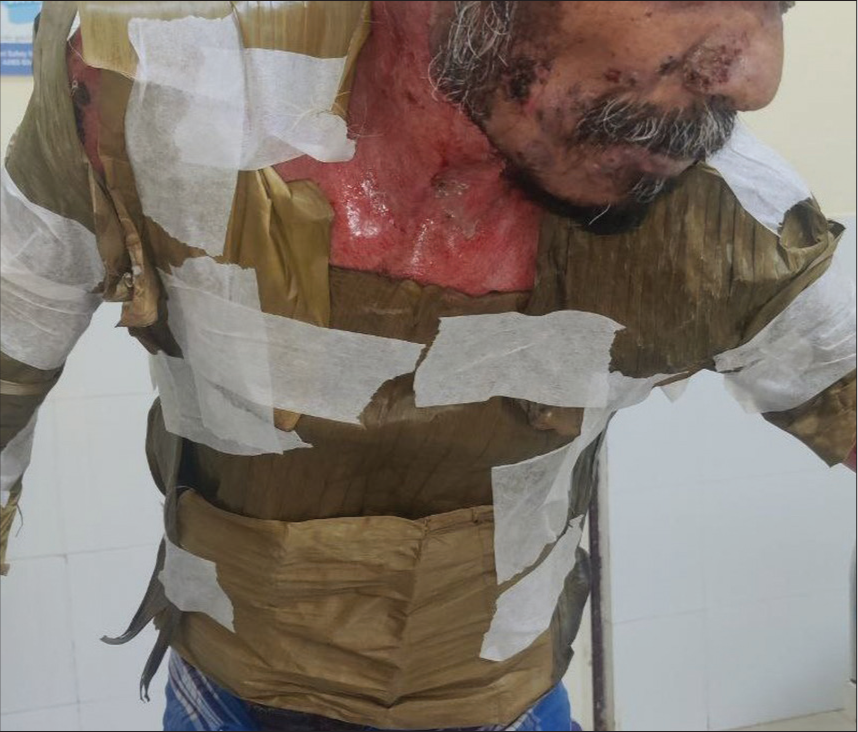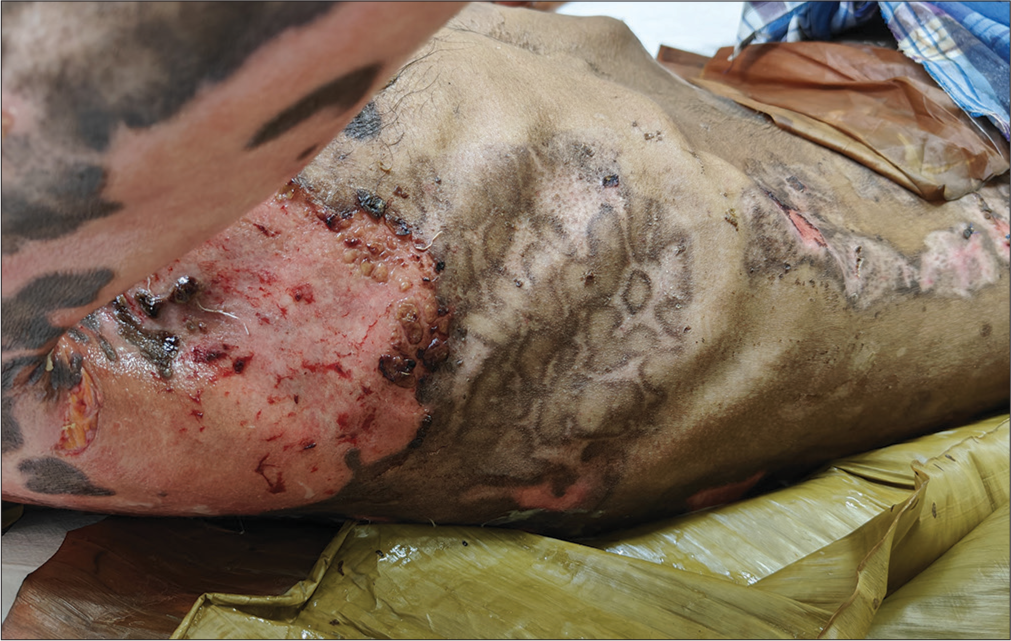Translate this page into:
Sterilized banana leaves: A low-cost alternative for aseptic skincare

*Corresponding author: Biswanath Behera, Department of Dermatology, All India Institute of Medical Sciences, Bhubaneswar, Odisha, India. biswanathbehera61@gmail.com
-
Received: ,
Accepted: ,
How to cite this article: Sangwan P, Gupta P, Behera B. Sterilized banana leaves: A low-cost alternative for aseptic skincare. CosmoDerma. 2024;4:64. doi: 10.25259/CSDM_53_2024
PROBLEM
Patients with severe pemphigus and/or Steven–Johnson syndrome/toxic epidermal necrolysis (SJS/TEN) usually present to health centers with extensive denudation of skin. This subset of patients requires regular and prolonged care (especially pemphigus) of compromised skin barrier to promote re-epithelialization while maintaining asepsis. This task becomes a challenge to the clinicians managing these patients. With the continuing expansion of medical sciences, different types of dressings are now available for skin erosions and wound care. However, in developing countries with a lack of medical insurance, the cost of these dressings becomes a burden to the patient. At some centers including Jawaharlal Institute of Postgraduate Medical Education and Research, Puducherry (author’s experience), banana leaves in both sterilized and unsterilized forms are being used in the dermatology department for SJS/TEN and pemphigus patients.
SOLUTION
To the above-mentioned challenge, we propose a solution in the form of a low-cost and easily accessible alternative. The leaves of the banana plant (Musa paradisiaca) have been used (after proper sterilization) since the 20th century for burn and traumatic wounds for their dressing properties, which have now been found comparable to petroleum gauze dressings and have rather decreased pain on dressing change.[1] Sterilization of the leaves is the utmost important step of this process, which is best achieved by steam sterilization or autoclaving [Figure 1].[2] For dermatological diseases, the use of this dressing has not yet been explored, though we can share our experience with a patient of severe pemphigus vulgaris for whom we used autoclaved banana leaf dressings due to economic constraints of the family and noted a very good response [Figures 2 and 3]. Further, evidence needs to be created to compare the results with modern-day dressings. Hence, banana leaves can be used as an alternative dressing for non-affording patients.

- Autoclaved banana leaves ready for use by the patient.

- Banana leaves applied over pemphigus erosions as dressing and kept in place using micropore adhesive.

- Re-epithelialization following banana dressings and treatment with systemic immunosuppressives in the right axillary area.
Ethical approval
The Institutional Review Board approval is not required.
Declaration of patient consent
The authors certify that they have obtained all appropriate patient consent.
Conflicts of interest
There are no conflicts of interest.
Use of artificial intelligence (AI)-assisted technology for manuscript preparation
The authors confirm that there was no use of artificial intelligence (AI)-assisted technology for assisting in the writing or editing of the manuscript and no images were manipulated using AI.
Financial support and sponsorship
Nil.
References
- Evaluation of banana leaves (Musa paradisiaca) as an alternative wound dressing material compared to conventional petroleum jelly gauze dressing in contused, lacerated and sutured wounds over the head, neck and face region. Cureus. 2021;13:e18552.
- [CrossRef] [PubMed] [Google Scholar]
- Banana leaves as an alternative wound dressing. Dermatol Surg. 2013;39:290-7.
- [CrossRef] [PubMed] [Google Scholar]





